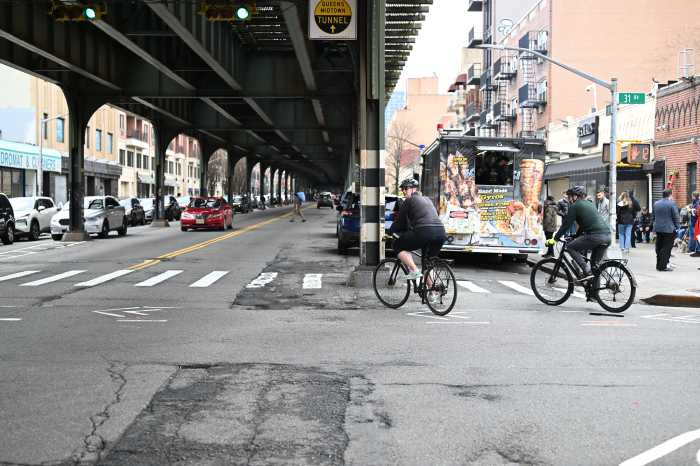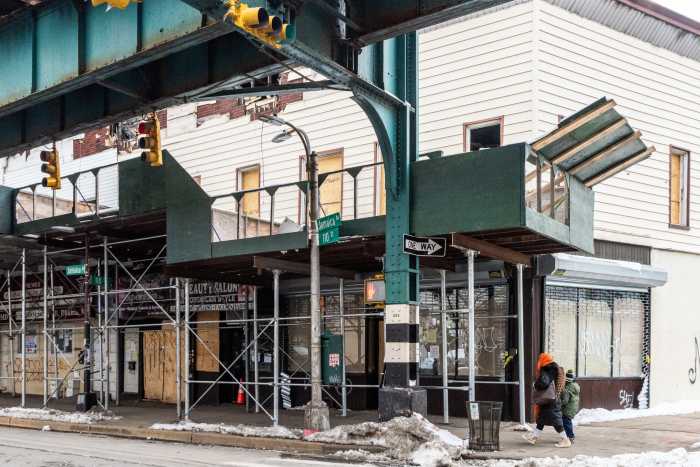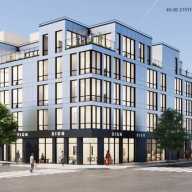A newly unveiled plan for the Creedmoor campus in eastern Queens seeks to bring 2,800 housing units alongside community amenities to the underutilized plot of land.
The 93-page Creedmoor Community Master Plan, made public by Governor Kathy Hochul on Dec. 6, proposes the revitalization of 48 acres of the 125 acre plot of the state-owned land. Currently 19 of the 25 buildings are sitting vacant. And in the past year, the site began to shelter some of the city’s new migrants in tent structures.
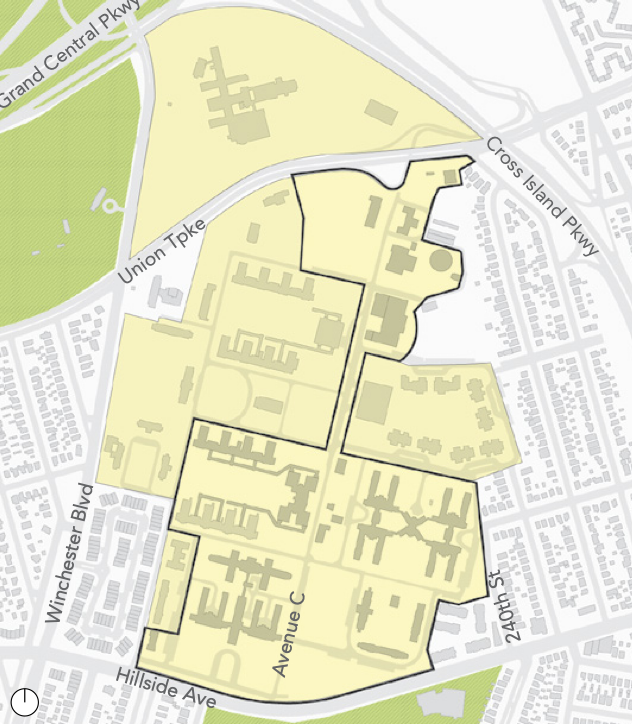
The plan proposes a grand total of 2,873 housing units – with 1,633 available for ownership and the rest as rentals. It stands to be the largest housing investment in eastern Queens since the construction of Glen Oaks Village in the 1950s and the newest single expansion for homeownership in the area since the North Shore Towers were constructed in the 1970s.
“Creedmoor represents a once-in-a-generation opportunity for New Yorkers to reimagine state land and plan for the emerging needs of tomorrow,” said Hochul. “Working together in productive partnership with the community — and thanks to the leadership of Queens Borough President Donovan Richards — we can build more housing, create more jobs, and strengthen Eastern Queens for the next generation.”
Over the past year, seven workshops were held to engage the community and hear from stakeholders on what they want to see in the redevelopment. Attendees expressed a strong desire for recreational family-friendly places to gather, such as open outdoors and an accessible town center. They also wanted new housing to give low and middle income households starter home options, as well as designate units for seniors and veterans.
Housing vision
Residents did not want to see high rise building types such as the North Shore Towers. They expressed a desire for new housing to match the look and feel of the surrounding area without overdevelopment.
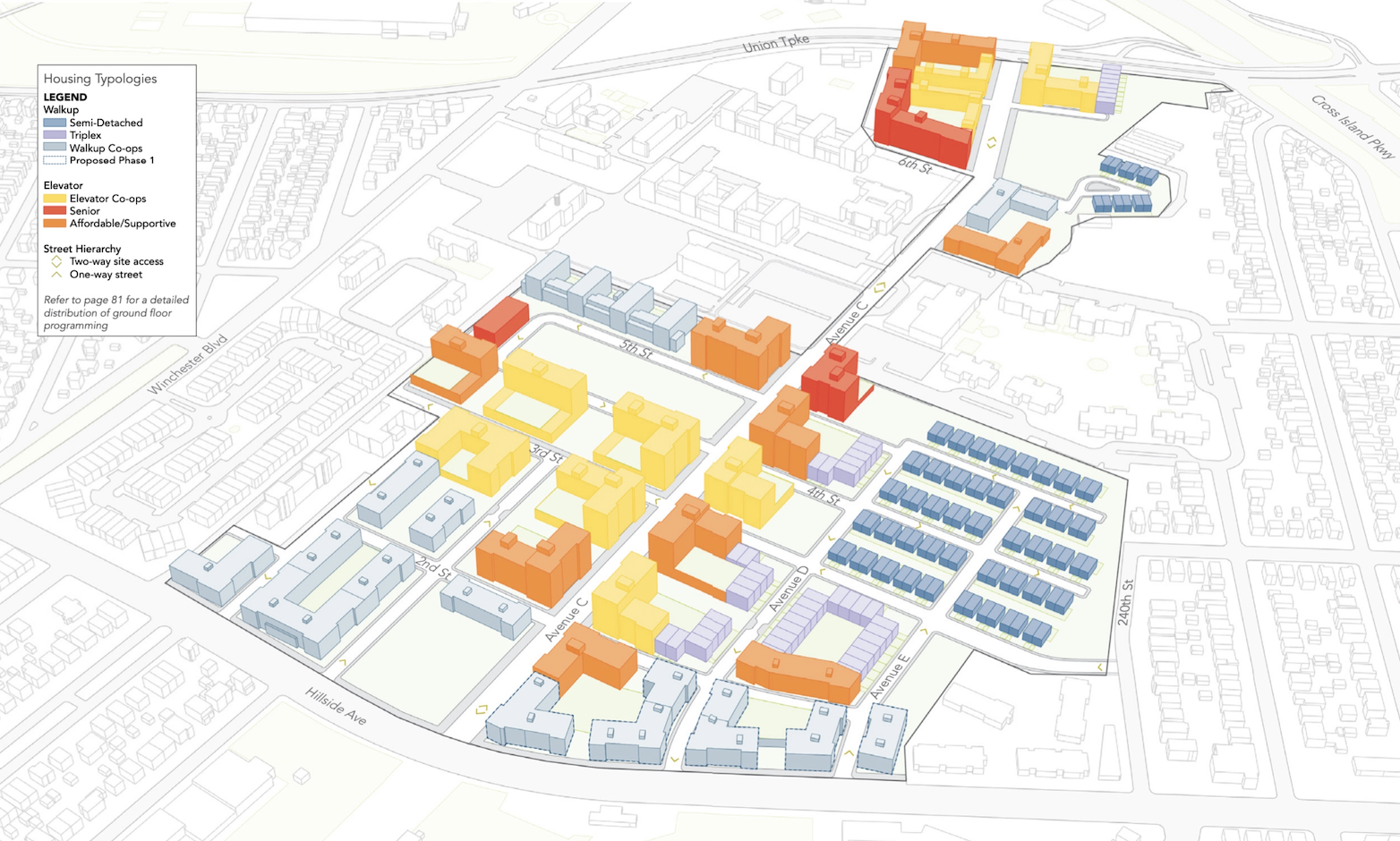
The majority units available to purchase under the plan would be in 6-8 story elevator co-op buildings. Slightly less units would be in 3-4 story walk-ups and triplexes. Semi-detached two family homes, proposed at 98 units, make up the smallest chunk for ownership options.
The rentals will include senior housing, in the form of studio and one-bedroom apartments in multifamily buildings distributed across the site. As well as 431 supportive housing units for tenants with mental illnesses funded through the Empire State Supportive Housing Initiative. And 432 affordable units would be available through a housing lottery for eligible households funded through public subsidy programs.
There would be a 15% preference for veterans, with added preference to those with disabilities. While veterans would not be eligible for senior units, they would be eligible for supportive housing if they were diagnosed with a mental illness post service.
Transportation options
Especially with a high reliance on cars in the area, the inclusion of adequate parking was favored by community members. But the redevelopment is also seen as a chance to rethink connections to public transit and increase micro mobility options.
There is currently a “last-mile” gap between Creedmoor and the Queens Village LIRR station. The proposal suggests additional bus stops along Hillside Avenue and Union Turnpike, as well as stops inside the campus that would be made possible by new entry points to these two corridors.
Parking would come in the form of a mix of garages, small surface lots and curbside spaces spread across the property. Two spaces per unit would be designated for residents of triplexes and semi-attached homes. Those in co-ops and rental units would receive one space at a monthly cost. The plan states that supportive housing residents would not require parking and parking would be limited for seniors.
Improved pedestrian paths and bike lanes inside the campus would connect the site to nearby Alley Pond Park, Queens County Farm Museum, Padavan-Preller Fields and the Vanderbilt Motor Parkway. And bike lanes along the site’s edges are also proposed as a last-mile transportation option.
Community spaces and recreation
The plan seeks to provide new retail, educational and recreational spaces for local residents that are interconnected with open green spaces across the sprawling campus. The addition of an indoor recreational center for year-round sports activities will also be examined.
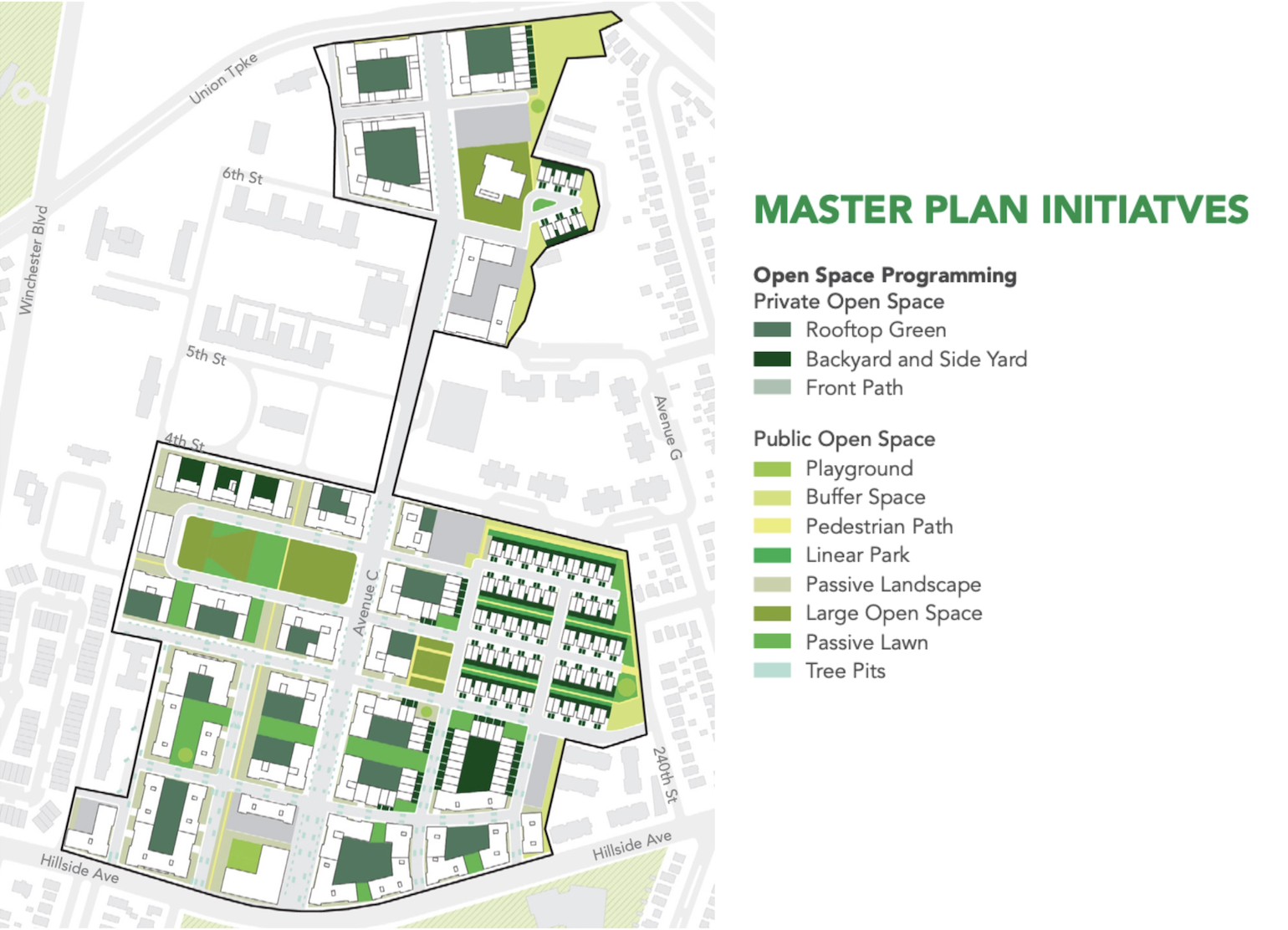
If the development leads to overcrowding at existing schools and childcare centers nearby, the plan has set aside space for a new daycare center along Avenue C and a k-8 public school inside the campus at the intersection of Avenue C and Hillside Ave. The School Construction Authority would have the option to build a new school if there is adequate funding.
Retail spaces that prioritize small businesses would be concentrated along Avenue C and Hillside Avenue for residents nearby neighborhoods to easily access. An adequately sized supermarket was also mentioned in the proposal.
The plan hopes to create job opportunities for local residents, especially with the participation of women and minority-owned businesses. And graduates of Creedmoor’s existing workforce development programs would be prioritized for entry-level hiring opportunities.
“The potential before us on the Creedmoor campus is limitless, as the new Creedmoor Master Plan boldly outlines. From thousands of units of housing to historic homeownership opportunities to school seats to community facilities to retail, this plan represents the single largest investment in Eastern Queens in generations, and I could not be more excited for the work ahead,” said Queens Borough President Donovan Richards Jr.” It’s taken decades to get to this moment, and I’m deeply grateful to Governor Hochul, Empire State Development and the residents of Eastern Queens for their tireless dedication and partnership in developing this community-centric proposal from the ground up. We’re making history every day in Queens, and this project is yet another example of our borough’s bright future.”
A Creedmoor Community Advisory Committee will be formed in the coming months to continue to include community voice as the development moves forward. The subsequent step is an environmental review that would analyze the development’s impact which could span between 18 to 24 months.


